Arctic faunaThe Arctic is home for a diverse range of specially adapted animals. They include mammal species, such as the polar bear, reindeer, caribou, musk ox, arctic fox, whale and walrus, that have seen their populations decimated by hunting, although they are slowly recovering following widespread protection. These animals now face new threats from rising temperatures and resulting habitat destruction, as well as from pollutants transferred from industrialised regions. The resident bird population is relatively small, but these are supplemented by vast numbers of sea birds which migrate to the region in summer to breed. |
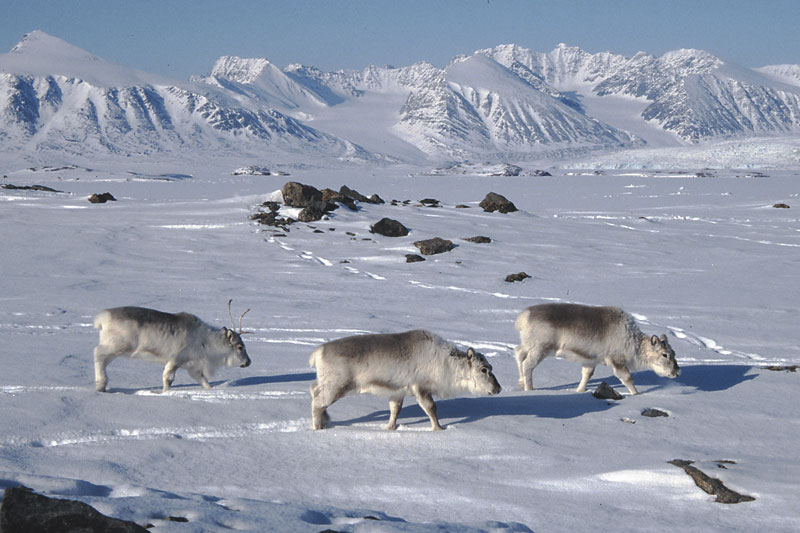 Reindeer (Rangifer tarandus platyrhynchus) near Kongsfjorden in northwest Spitsbergen. Land mammals like reindeer sometimes have a hard time locating the mosses and lichens on which they depend, especially in spring when snow-cover is thickest. | 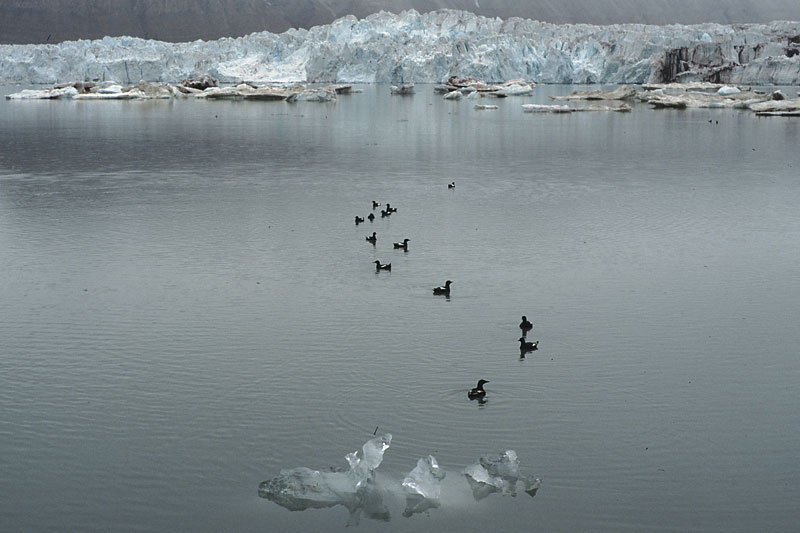 Arctic seas are cold and ice-infested, yet are attractive to sea birds, such as these guillemots (Uria aalge) near the tidewater glacier of Kronebreen, northwest Spitsbergen. In summer, when the ice breaks, marine productivity increases dramatically. | 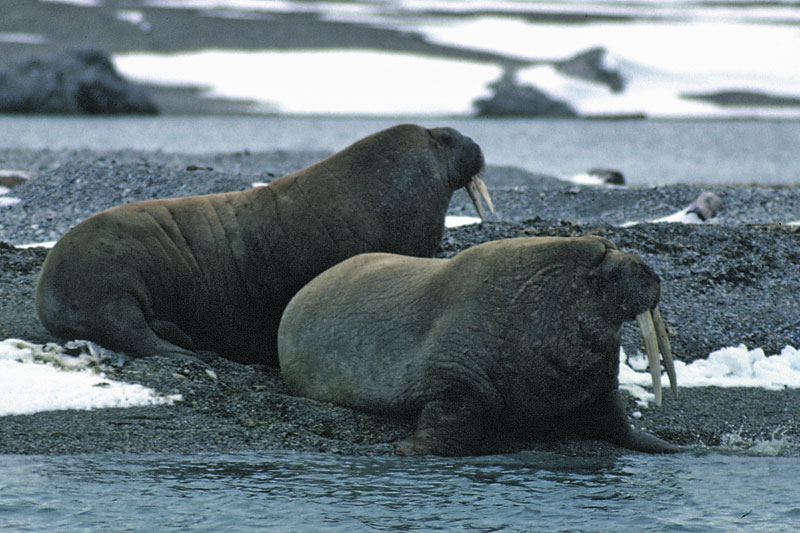 A pair of walrus (Odobenus rosmarus) grace the shores of Nordaustlandet, Svalbard. Although once largely exterminated, they are making a slow recovery, and seem to be confined to relatively few areas. | 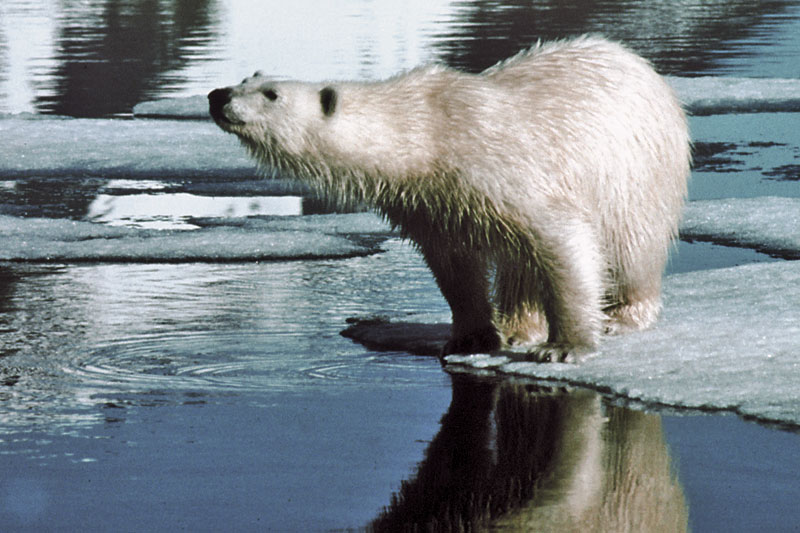 The ‘King of the Arctic’ is the polar bear (Ursus maritimus). Its wide feet enable it to traverse relatively thin sea ice, as here in Hornsund, southwest Spitsbergen. (Photo: David Burkitt). |
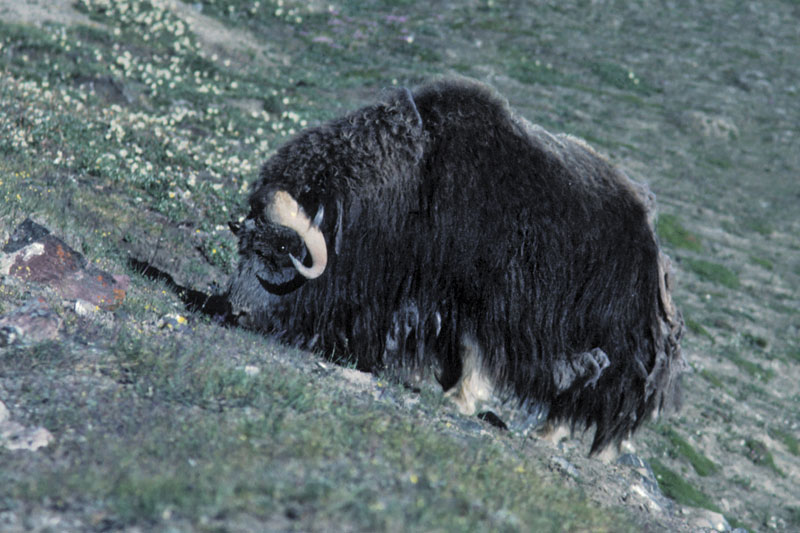 Acquaintance with a musk ox (Ovibos moschatus) at close quarters is an unnerving experience. This animal charged the photographer without warning, but fortunately stopped a couple of metres away. | 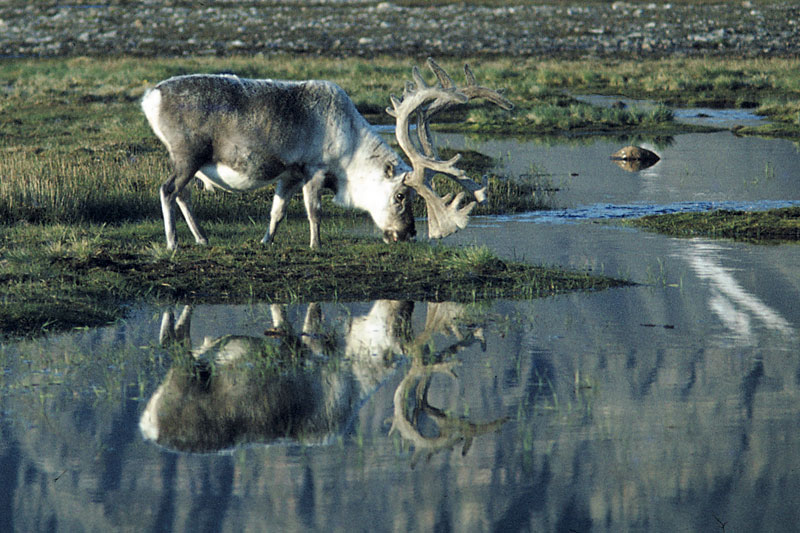 The ‘pot-bellied’ nature of this reindeer (Rangifer tarandus platyrhynchus), observed near Kapp Linné in western Spitsbergen, indicates that the summer food supply has been more than adequate. | 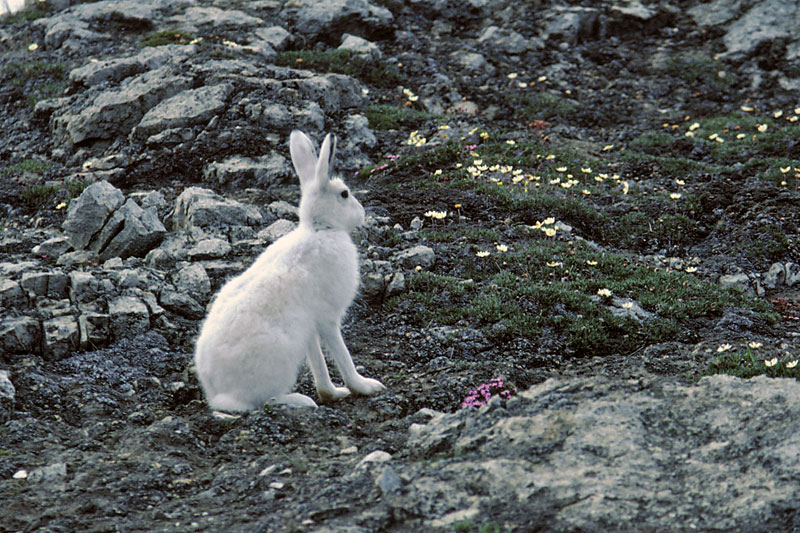 Arctic hare (Lepus arcticus) on the tundra of Ymer Ø, East Greenland | 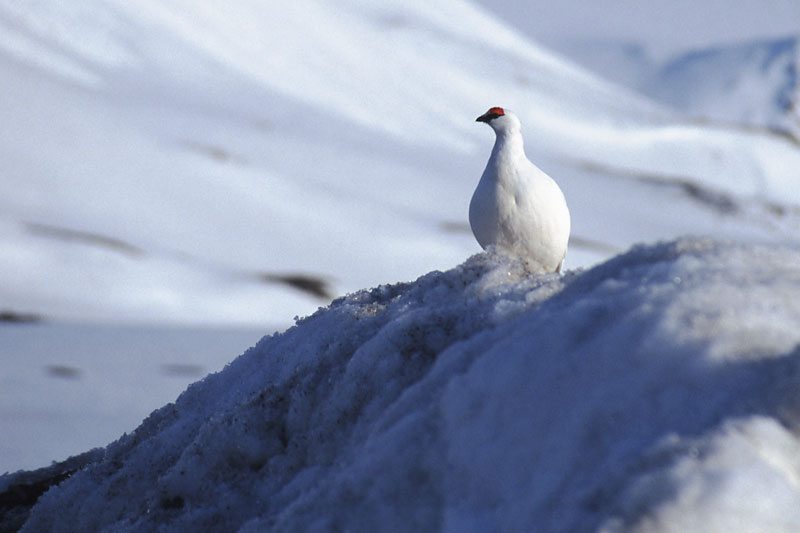 One of the few year-round resident birds on the Arctic islands is the ptarmigan (Lagopus mutus hyperboreus). In winter its feathers change from brown to white, providing good camouflage irrespective of the conditions. |
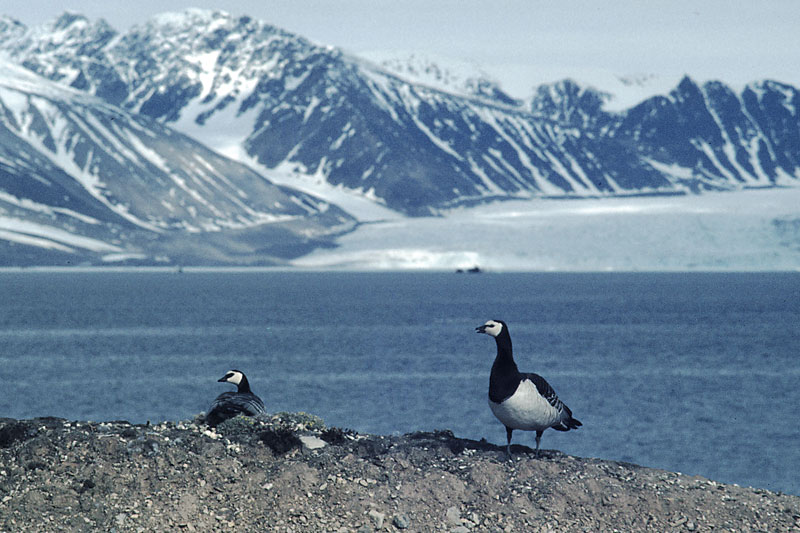 A common summer visitor to Svalbard is the barnacle goose (Branta leucopsis). They nest on bare open ground, close to the coast, as this view at Ny-Ålesund, northwest Spitsbergen, shows. Their young are vulnerable to predation by foxes. | 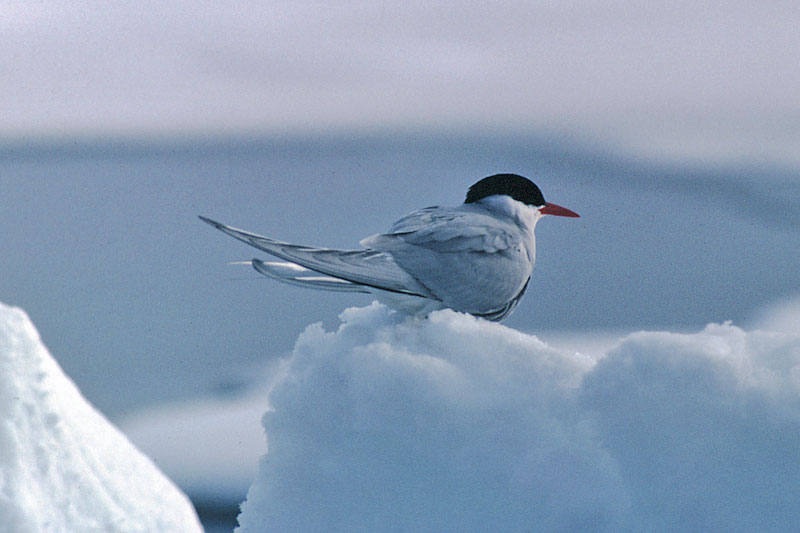 One of the most elegant birds in the Arctic, yet at the same time the most vicious, is the Arctic tern (Sterna paradisaea). Nesting in Spitsbergen in summer it migrates to the Antarctic after breeding. | 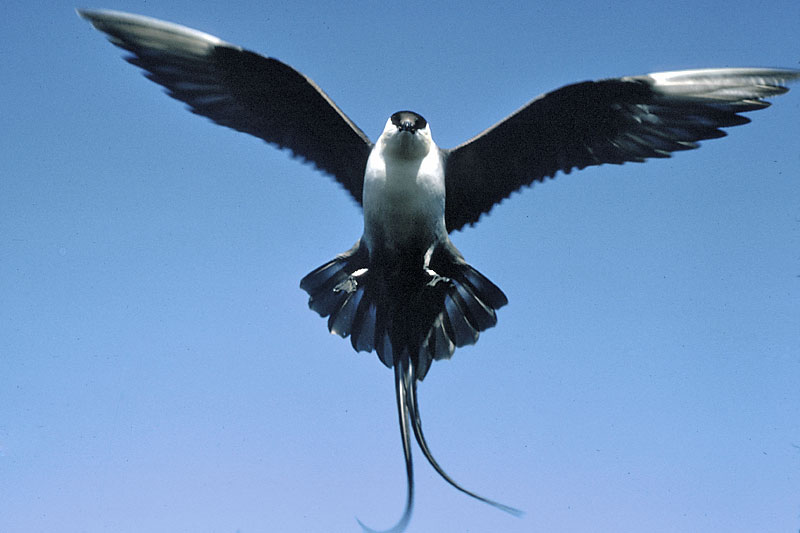 Nesting on tundra away from the coast is the long-tailed jaeger (similar to the arctic skua). This one is attacking the photographer who had inadvertently approached too close to its near-invisible nest. | 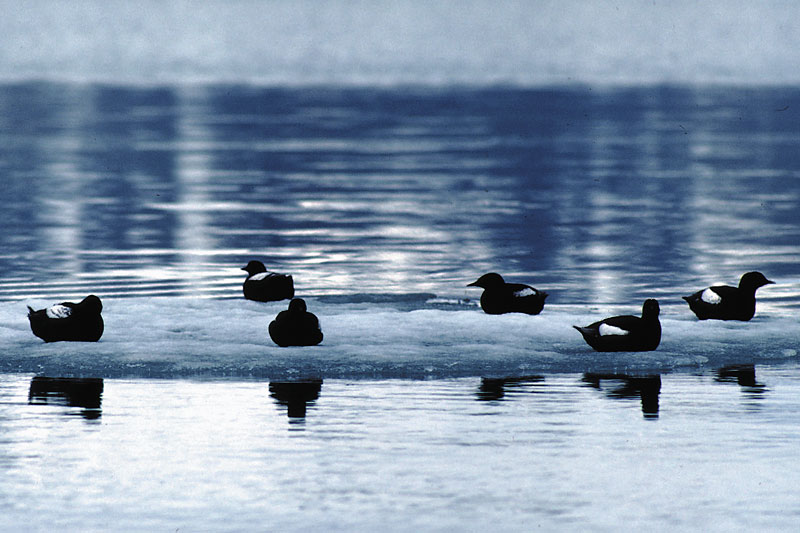 Guillemots (Uria aalge) resting on an ice floe in a Spitsbergen fjord. |
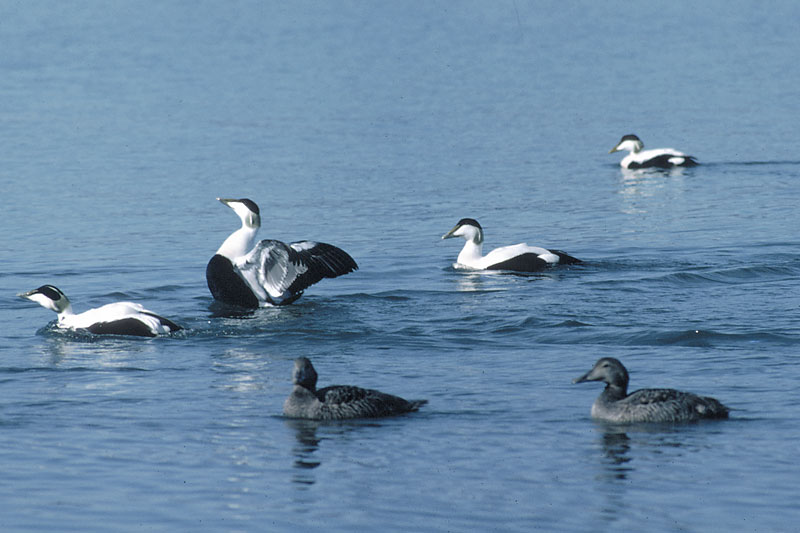 Black and white male common eider (Somateria mollissima) competing for the attention of brown females in early summer in Spitsbergen. | 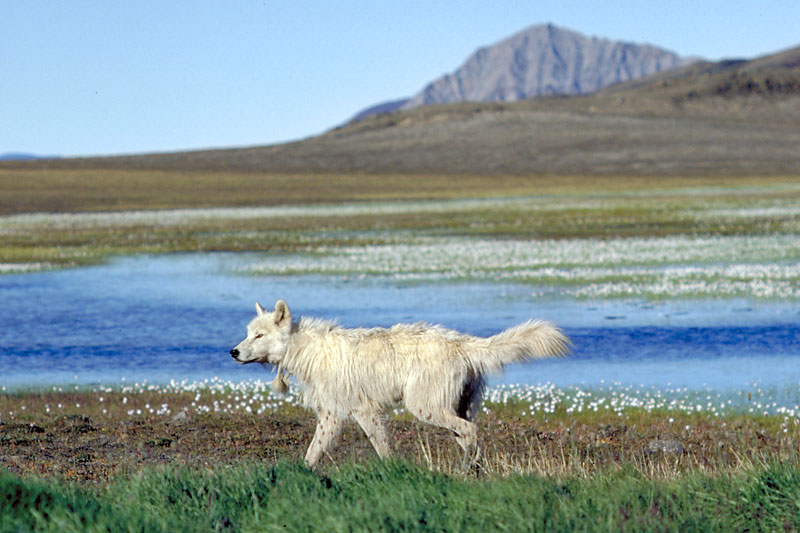 An arctic wolf, or white wolf (Canis lupus arctos) is strolling around Expedition Fjord basecamp during the field season 1977. Photo Jürg Alean. | | |
| Photos: Michael Hambrey |